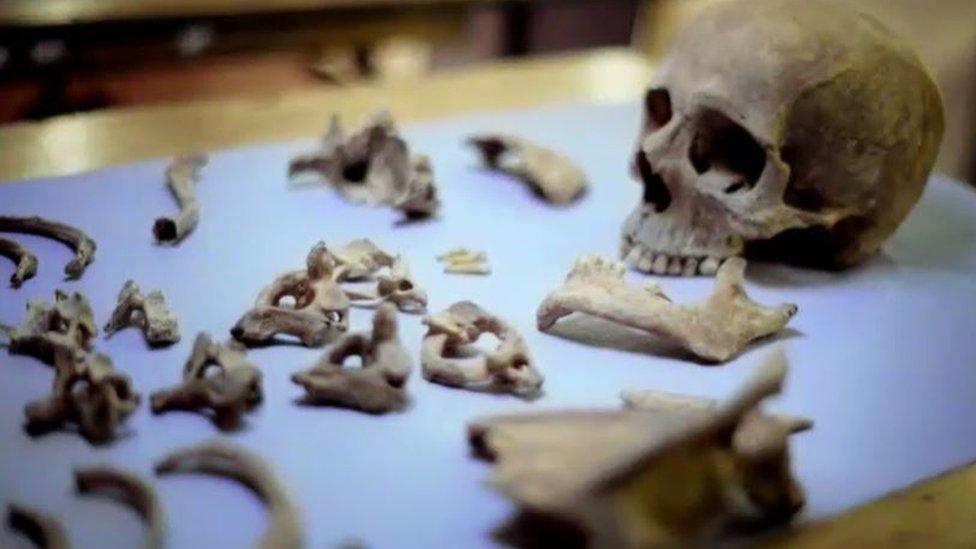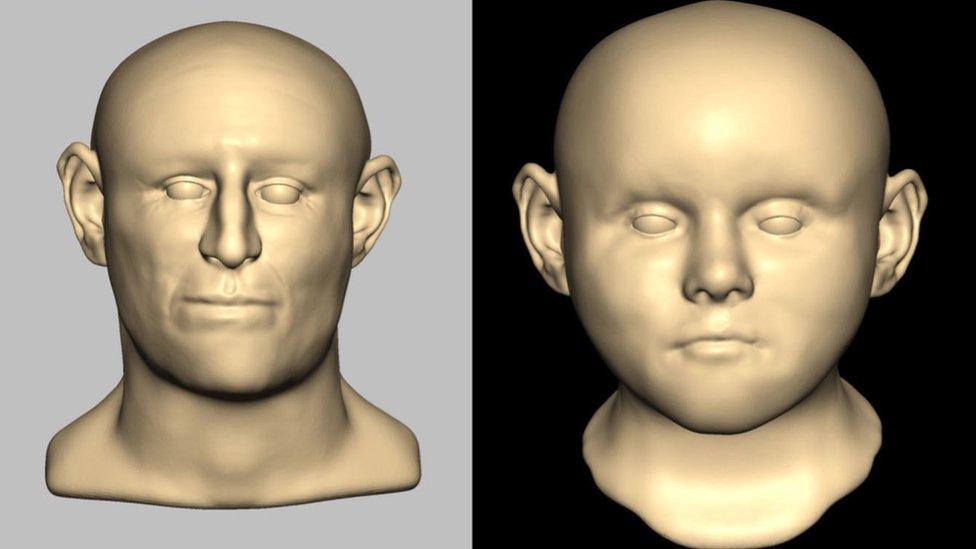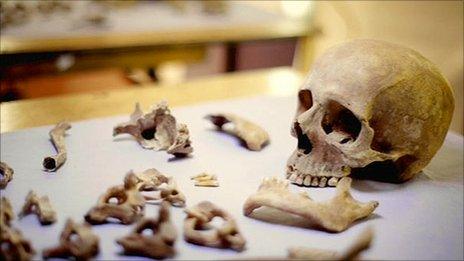Medieval bodies in Norwich well victims of anti-Semitism
- Published

The remains were found in 2004 ahead of construction of the Chapelfield Shopping Centre
Bodies found at the bottom of a medieval well were Ashkenazi Jews and victims of 12th Century anti-Semitic violence, DNA evidence has suggested.
They were discovered in 2004 during an excavation of a site in the centre of Norwich.
The well contained the remains of at least 17 people, mostly children, six of whom have had their DNA analysed.
Dr Selina Brace from the Natural History Museum said she was "delighted" with the results of the research.
Scientists from the museum, University College London, Mainz and Cambridge Universities, and the Francis Crick Institute, conducted analysis on the remains.
According to the researchers they have a strong genetic link with modern Ashkenazi Jews, making them the oldest Jewish genomes to have been sequenced.
The findings, published in the Current Biology journal, external, indicate that four of the probable victims were relatives, including three young sisters, aged five to 10 years old, 10 to 15 years old and a young adult.

Prof Caroline Wilkinson from Liverpool John Moores University reconstructed face of a male adult (left) and a child (right) based on skeletal remains
Their DNA included variants associated with genetic diseases more commonly found in Ashkenazi Jewish populations - one of two major ancestral Jewish groups - today.
According to the study, the findings were consistent with them being victims of a historically-recorded anti-Semitic massacre by local crusaders and their supporters in Norwich on 6 February 1190 AD.
It was recorded by the chronicler Ralph de Diceto in his Imagines Historiarum II where he wrote: "Accordingly on 6th February [in 1190 AD] all the Jews who were found in their own houses at Norwich were butchered; some had taken refuge in the castle".
Dr Brace, a lead author on the paper, said: "Twelve years after we first started analysing the remains of these individuals, technology has caught up and helped us to understand this historical cold case of who these people were and why we think they were murdered."

Find BBC News: East of England on Facebook, external, Instagram, external and Twitter, external. If you have a story suggestion email eastofenglandnews@bbc.co.uk
Related topics
- Published23 June 2011
